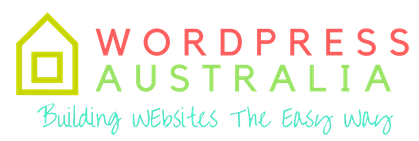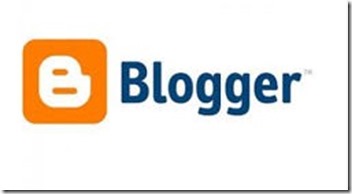Blogs are useful for a multitude of reasons, and you are bound to find a blog that caters to just about anything you can think of. So, finally, you have made the choice: you’re starting your own blog.
But, let me take a guess: you are clueless!
With so much information on the topic, it is easy to become carried away. Fret not, however, as I am here to assist you. You have probably witnessed a scenario like this: you find a legitimate source of information that tells you to go from A to B, but then you find another source telling you to do the opposite. Naturally, this leads to confusion.
The internet is rife with misdirection and unclear-or-vague instructions. In this article, I’m going to give you actionable directions and techniques you can use to start your blog.
Getting Started with Your New Blog
The first thing you’ve got to have cleared is the blogging platform; this is an important decision, but don’t feel intimidated, this isn’t rocket science.
You have several options for this end. I personally recommend (in order of relevance):
WordPress.org:
Simply put, and with no affiliation whatsoever, WordPress is the biggest blogging platform in the market. With over 80 million active users and an endless tide of plugins, add-ons, and themes, you can rest assured knowing you’re in the right place to blog.
The reasonable downside of WordPress is, you guessed it, money. You will have to invest money in it, and it can get expensive. But don’t worry too much about it, I’ll teach you how to get a deal.
Blogger:
Google-owned Blogger is frankly the second-best when it comes to blogging. While not comparable to WordPress’s flexibility, Blogger offers access to well-known Google tools and makes blogging very simple: having a Gmail account means you already have a blogger account.
The major downside of blogger, besides its limitations, is the fact that you don’t have ownership of your blog, given that it is hosted by Google.
Tumblr:
Half blogging platform, half social network. It is very easy to use and perfect for bloggers looking for a different approach. However, considering its limitations, long-form content should be avoided in this platform. Microbloggers might opt for Tumblr and the fact that its free makes it an attractive option.
The major downside of Tumblr is the small number of plugins and difficulty to monetize.
On Your Resources and Picking the Right Tool for The Job
You’ve got two options: Self-hosting or free-hosting. This decision might seem quick to make, but it is far more involved than you think. Whether or not you decide to pay dictates whether you have a domain name and limitless options.
The three cited platforms above offer free blogs. It is a solution for those who aren’t looking to get very serious about blogging but be mindful of the limitations given below:
No Domain Name
Not only it looks ugly, it inspires less confidence because you’re telling others “Hey, I am not paying a dime for this.” While it might be a non-issue if, again, you’re not serious about blogging, you’re going to face problems if you try to reel a lot of visitors.
Obstacles
From impossibly hard to monetize to outright impossible. Free-host puts a clasp on several things such as upload storage, themes, plugins, etc.
No Ownership
If you’re not the one hosting your blog, it is not yours. Your blog will be the property of the company; whenever they decide to wrap it, they will.
Self-Hosted isn’t only recommended for serious bloggers, it is a must. You get ownership, a domain name, and break down a lot of the imposed limitations.
As for the prices, you can get a decent hosting and domain name for as low as $3 per month in Bluehost or iPage. A domain name, on the other hand, might be around $8 to $15 a year; some services, such as iPage, offer a free domain name which is a huge plus.
Strategy and Focus
So, making the actual blog. If you’ve got the know-how, you can get around making your own themes with HTML and CSS. Alternatively, you can surely get one of the free-themes. Better yet are the premium themes, however. For as low as $40 you can get a nice-looking theme that will make your blog shine.
Assuming you’ve got your content strategy in mind, you must work on the aesthetics: Do you want to look professional and sleek? Maybe colorful and with lots of images and fancy font? It is up to you!
SEO (Search Engine Optimisation)
Number one rule is keeping things accessible, no one wants to have a headache navigating in a blog. Optimizing your content with SEO, proper headings, relevant images, etc. will ensure your blog gets traffic. Examine successful bloggers and their blogs, and try to understand what they all have in common so that you can replicate it in yours, with your own twist, of course.
Good Content
Lastly, don’t fall into the trap of daily posting for the sake of it; take your time, and deliver good content. People don’t talk about the blogger who uploads bad posts every day, they talk about the stellar blogger who uploads only the best, and don’t forget that in this business, your best advertisers are your own visitors!
Good luck with your blog, and never stop learning!
This article was written by my good friend David, who did research on starting his first blog and then created this article to help you out.
Below are some resources from my blog that can help you make decisions in your building process.
—————————-
Some useful resources below if your are looking to start a blog:
Building a blog quickly with 1 click install – http://www.wordpressaustralia.com.au/make-blog-15-minutes/
SEO for your blog – http://www.wordpressaustralia.com.au/affiliate-sites-seo/
Choosing a Hosting company – http://www.wordpressaustralia.com.au/category/hosting-companies/















